Zeiss Milvus 50/1.4 vs Zeiss Otus 55/1.4 vs Zeiss Planar 50/1.4 – Comparative Lens Review
Build Quality
We can only repeat ourselves from the previous review – all three Zeiss lenses are exceptionally well manufactured. Build quality is among best in the industry, but there are few important differences to mention. The brief look on all three lenses will tell us probably most important thing to know – Otus is significantly bigger than Milvus, which is bigger than Planar.
Looking at all three next to each other, they remind me Matryoshka doll, pity we can’t keep them assembled alike.
Let’s take a more detailed look at each of them.
1 Zeiss Otus 85/1.4 ZF.2
Otus 55/1.4 will end in Zeiss history as the first lens to come in “New” modern design, for which Zeiss was awarded with prestigious iF product design award in 2013.
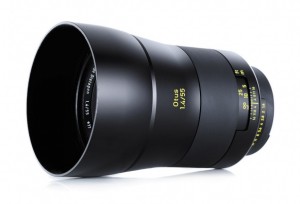
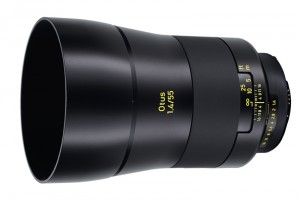
Made of metal and glass mostly, lens feature rubberized focus (all versions) and aperture ring (Only ZF.2 version). That makes lens handling somewhat more convenient, especially in the cold weather, but on the other side, rubber itself is very prone to fingerprints, light scratches and dust.
Using lens just a couple of days will leave marks on the rubberized parts and probably influence its resale value. On top of that, used rubber doesn’t really look and feel very solid (it feels rather pleasing and soft) and the big question is its durability in time. I don’t want to even think, how much will Zeiss charge for replacing it.
At the rear side of the lens, we will find 32mm glass element which is positioned almost in line with the contacts at infinity focus settings. Shifting focus toward close range will pull back rear lens element for approx. 0,5 cm inside the lens, leaving only black tube around. This construction should insure inner reflection free performance.
On the Nikon (ZF.2) version we can find rubberized aperture ring above the mount, followed by distance scale in both feet and meters. There is also DOF scale. All numbers and letters are engraved and colored in yellow. The mount itself looks very solid, but Otus doesn’t have weather sealing protection (gasket ring) around the mount, which is shame for the lens in its price category.
Focus ring, is approx. 30mm wide and rubberized, which in combination with super smooth focusing gear, delivers unique and excellent manual focusing experience. 250° focusing throw ensures outstanding precision when critical focus is needed. Getting back to focusing. Maybe only most expensive Leica or old Contarex lenses would come close to this manual focus enjoyment.
Front of the lens feature filter thread of 77mm and lens hood bayonet.
Lens comes in nice and big paper box, together with all metal lens hood and both caps. However you won’t find any carrying pouch for transporting or storing the lens, which is slightly hard to digest considering the price.
All in all, Otus 55/1.4 is big, heavy, extremely well made standard focal length lens, with amazingly smooth and precise manual focusing and no weather sealing.
2 Zeiss Milvus 50/1.4 ZF.2
Milvus lens line, went in the Otus direction. Both lines have similar design, and I believe they are made from similar materials.
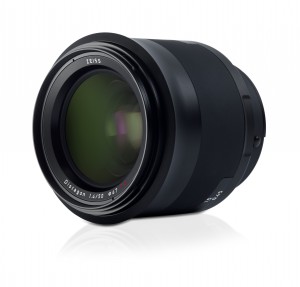 One of the key differences between Otus and Milvus is that Milvus lenses are moisture and dust protected (to complete protection, clear front filter is needed). To ensure weather sealing, there is insulation bellow each moving element and also blue rubber ring around the mount. Zeiss sometimes makes moves that is hard to understand. Why their flagship – Otus line lack weather sealing is beyond my understanding, but the fact that Milvus has this feature, is great plus for potential buyers, especially professional field photographers.
One of the key differences between Otus and Milvus is that Milvus lenses are moisture and dust protected (to complete protection, clear front filter is needed). To ensure weather sealing, there is insulation bellow each moving element and also blue rubber ring around the mount. Zeiss sometimes makes moves that is hard to understand. Why their flagship – Otus line lack weather sealing is beyond my understanding, but the fact that Milvus has this feature, is great plus for potential buyers, especially professional field photographers.
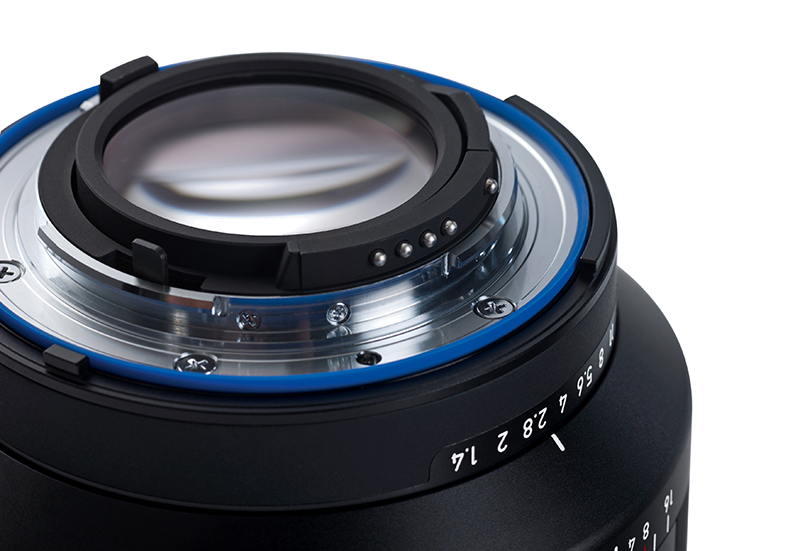 The rear side of the lens reveals 31mm rear glass element with aspheric surface, which elevate with the mount in infinity position. Focusing toward minimum focus distance, the rear element will hide in the body for approx. 1cm. Significant difference between Milvus and Otus on the rear side is that blue gasket ring which helps to protect Milvus from dust and moisture.
The rear side of the lens reveals 31mm rear glass element with aspheric surface, which elevate with the mount in infinity position. Focusing toward minimum focus distance, the rear element will hide in the body for approx. 1cm. Significant difference between Milvus and Otus on the rear side is that blue gasket ring which helps to protect Milvus from dust and moisture.
Milvus also has “de-clicking” aperture, feature that most videographers will welcome, because it allows the aperture to be set step-less. In normal operational mode, ZE (Canon) version will set the aperture every 0,3 EV, while ZF.2 (Nikon) can be in addition manually set by 0,5 EV (or 0,3 EV in camera).
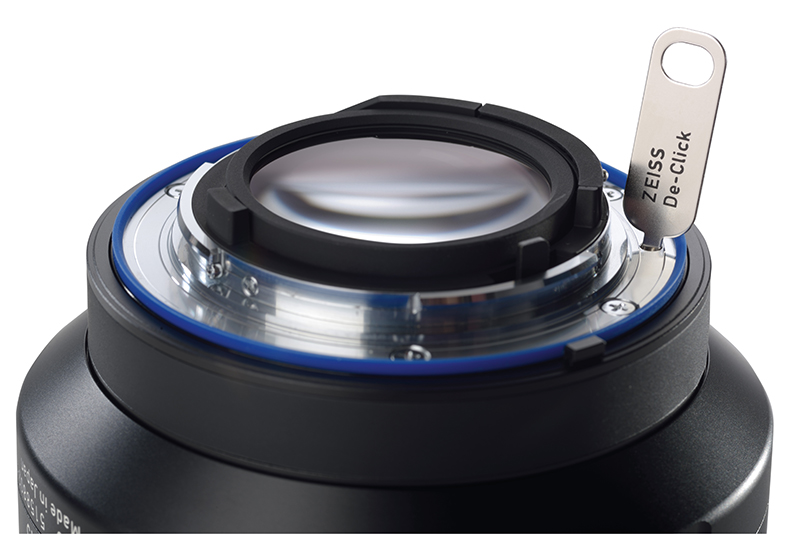 Another difference between Otus and Milvus is the construction of the focusing ring. While Otus has wide “classical” rubberized ring that moves within barrel, Milvus has basically whole barrel rotating with one part of it being rubberized. In other words, in order to focus with Otus, you need to twist rubberized focus ring, but with Milvus you can twist whole housing above distance scale, holding rubberized part or metal alloy. I am not a big fan of this solution, because it can make lens mounting on the body very tricky. On the other hand, it is good that you can simply turn focus without finding exact location of focus ring, because sometimes it can speed-up the reaction.
Another difference between Otus and Milvus is the construction of the focusing ring. While Otus has wide “classical” rubberized ring that moves within barrel, Milvus has basically whole barrel rotating with one part of it being rubberized. In other words, in order to focus with Otus, you need to twist rubberized focus ring, but with Milvus you can twist whole housing above distance scale, holding rubberized part or metal alloy. I am not a big fan of this solution, because it can make lens mounting on the body very tricky. On the other hand, it is good that you can simply turn focus without finding exact location of focus ring, because sometimes it can speed-up the reaction.
Focus throw is around 225°, less than Otus, but still plenty for precise focusing.
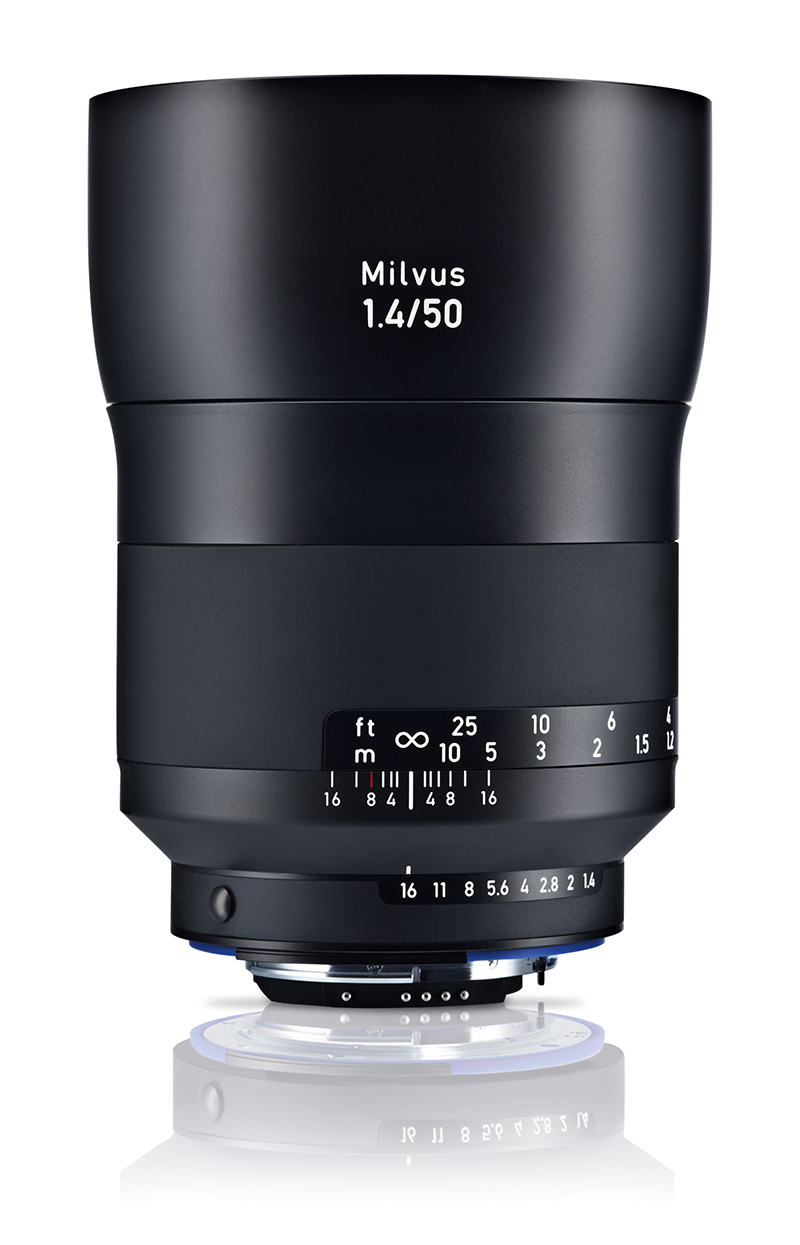 On the front we will find 46mm diameter anomalous partial dispersion glass element, that is moving inside-outside with change of focus. 77mm screw mount filter thread is outlined with the lens hood bayonet mount. Lens hood is all metal and it fits perfectly on the lens, making hardly visible spacing gap. With a lens hood, Milvus looks like nice monolith object.
On the front we will find 46mm diameter anomalous partial dispersion glass element, that is moving inside-outside with change of focus. 77mm screw mount filter thread is outlined with the lens hood bayonet mount. Lens hood is all metal and it fits perfectly on the lens, making hardly visible spacing gap. With a lens hood, Milvus looks like nice monolith object.
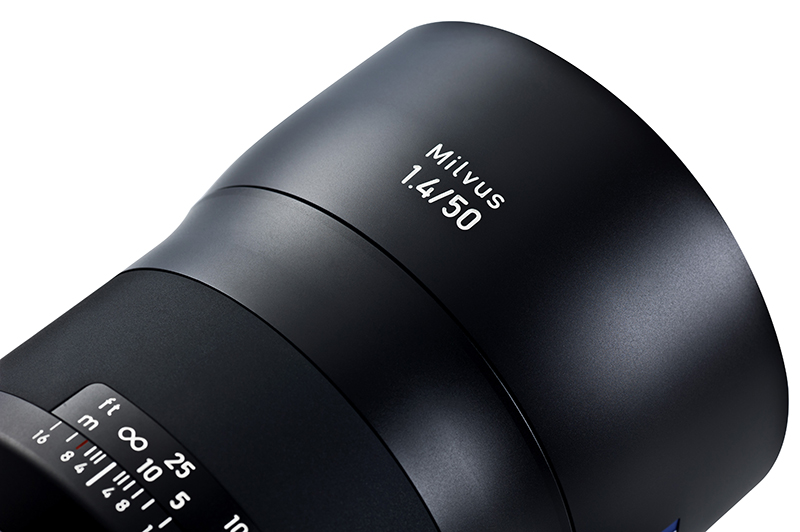 Milvus 50/1.4, unlike its bigger (much bigger) brother Milvus 85/1.4, while large and heavy, doesn’t look over-sized and it balances well on my Nikon D800E.
Milvus 50/1.4, unlike its bigger (much bigger) brother Milvus 85/1.4, while large and heavy, doesn’t look over-sized and it balances well on my Nikon D800E.
3 Zeiss Planar 50/1.4 ZF.2
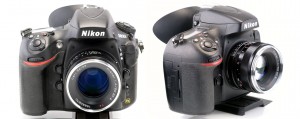 Planar is very compact in comparison to other two lenses while its build quality is as good as it gets and fully comparable with Otus and Milvus in terms of selected materials. Metal and glass, no rubber, no fancy features such as de-clicking and unfortunately no any form of weather sealing.
Planar is very compact in comparison to other two lenses while its build quality is as good as it gets and fully comparable with Otus and Milvus in terms of selected materials. Metal and glass, no rubber, no fancy features such as de-clicking and unfortunately no any form of weather sealing.
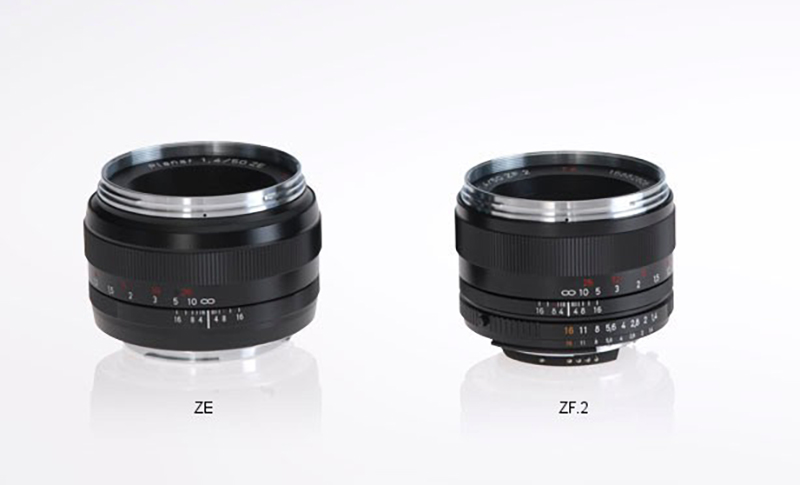 All metal focus ring with fine ribbing, wide just enough for finger grip, has a throw of approx. 223°, just like Milvus. Focus scale is engraved in meters and feet. Aperture ring (only ZK, ZF and ZF.2 version), is bellow the focus ring and being very thin, it’s sometimes hard to find it without looking at the lens, but it is far enough from the mount for comfortable operation.
All metal focus ring with fine ribbing, wide just enough for finger grip, has a throw of approx. 223°, just like Milvus. Focus scale is engraved in meters and feet. Aperture ring (only ZK, ZF and ZF.2 version), is bellow the focus ring and being very thin, it’s sometimes hard to find it without looking at the lens, but it is far enough from the mount for comfortable operation.
58mm filter thread surrounded by lens hood bayonet is the only silver part on the black barrel. Lens hood is also metal and it fits well, but far from Milvus or Otus precision.
Planar 50/1.4 is extremely compact and well-built lens. It doesn’t have any fancy features, nor it is made with exotic glass, but as we will see in the real life tests, this little Zeiss has a lot in common with its bigger brothers, especially stopped down to f/2.8 and smaller.
>To help this page survive, your donation will be highly appreciated.
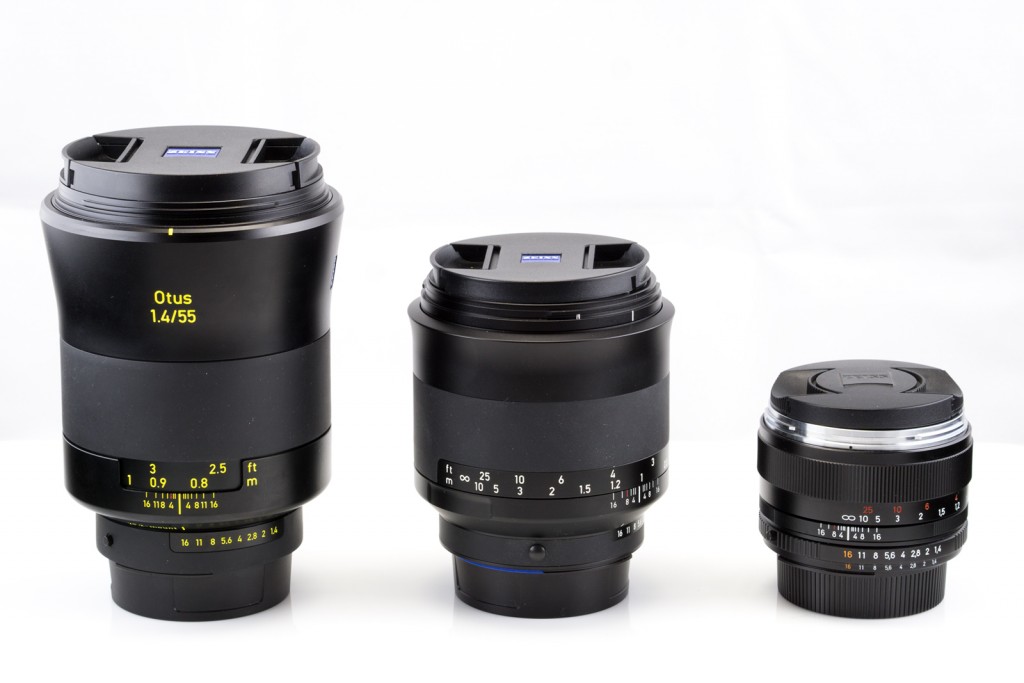
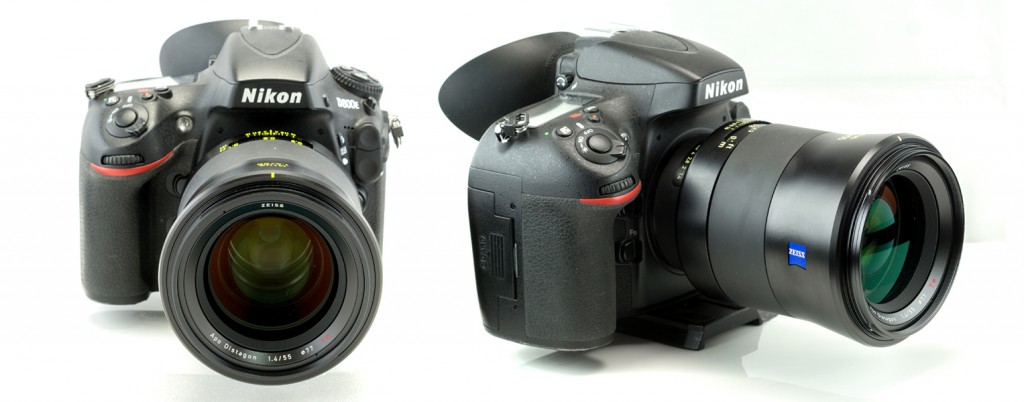
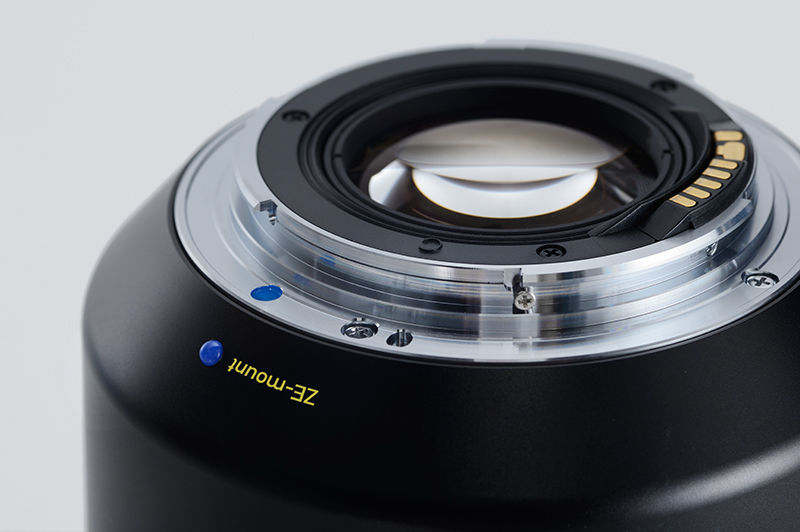
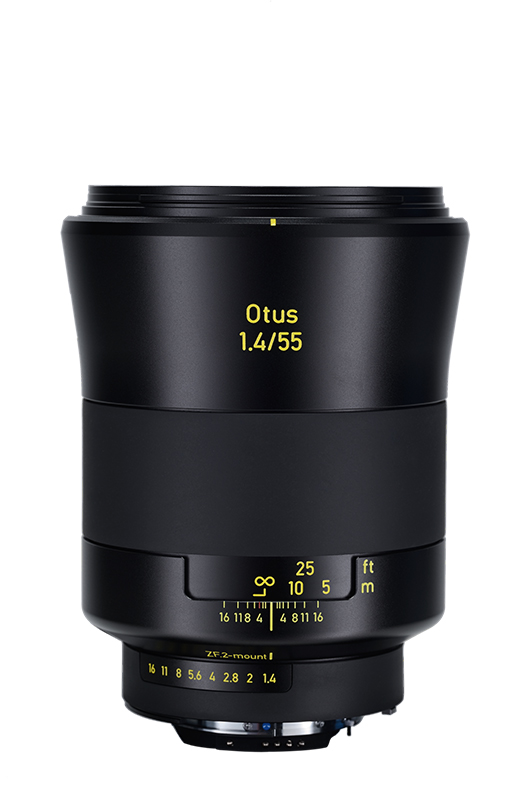
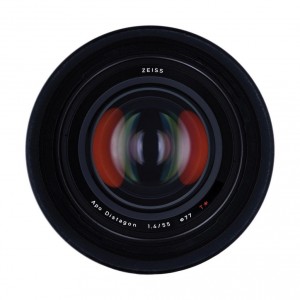
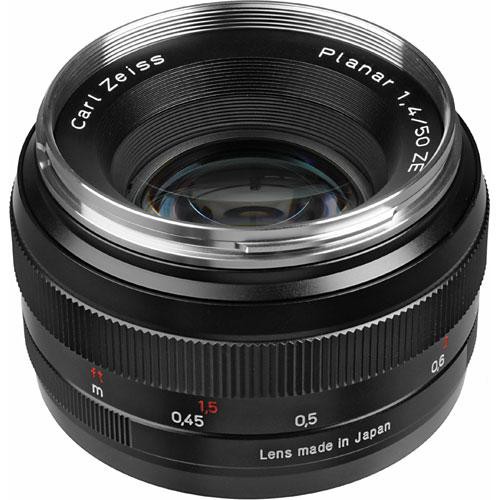
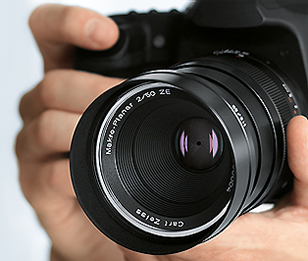
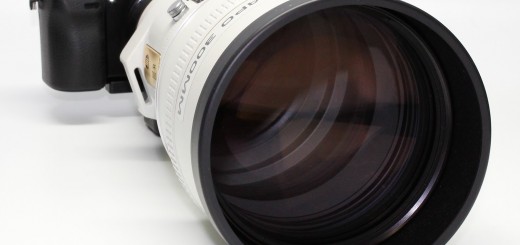
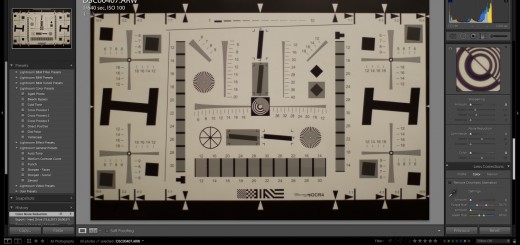
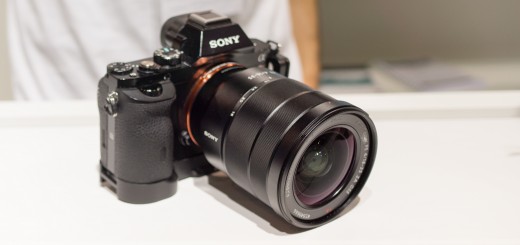













regarding the manual focusing. I recently tried the Zeiss 85mm f/1.4 Milvus with the new D5 and I think that the the smaller focus points may make it possible to manual focus with the lens. Unfortunately, I did have a few issues, for some reason the focus point wasn’t visible for some reason on the D5, when manually focusing, I was told that the camera didn’t have release firmware. But when I reviewed the shot, it did show where the focus point was placed and the image did look sharp. So fingers crossed it is a big improvement.
Great, let us know how it works for you at full opened aperture, once you manage to fine tune it.
Cheers,
Viktor
I don’t own the D5, so it might be a while, I do want to try it with the D500, to see if the camera will manual focus accurately with the added pixel density of the camera, which will be closer to a D820 (I am guessing it will have more than 36mp).
Where would you put the Zeiss 50mm makro-planar in this equation of Milvus, Otys and classic planar? I see you have done a review of macro 50mm lenses but I believe the classic makro-planar belongs here due to f2 speed and focal length.
Personally I’m impressed that a planar design performs so well wide open at f2 but I don’t know how it compares to the new Milvus. The Otus, I know what to expect as I have 135mm f2 APO.
Hi Nat,
I haven’t compare macro lenses directly, I reviewed Milvus 50/14 and compared it with Otus 55 and Classic Planar 50. Macro Planar 50/2 was optimized for the short distances where it achieves very good resolution figures in the center of the frame. As a most macro lenses it has rather flat focus field and very long focus thread. I don’t know where I will put it in the above mentioned comparison, because I didn’t test it for other usage than product shots (mainly short working distances). I am very happy with the lens for that type of work.
Hope it helps,
Viktor
Thank you for your reply. I guess it’s apples to oranges in a way. People used to compare makro-planar to the f1.4 classic back when there were only two Zeiss 50mm lenses. Nowadays it’s 4 50mm lenses from Zeiss alone not to mention the offerings from third parties such as Tamron Sigma and Nikon already has more than 10 lenses in the 50mm range.
So far I’m happy with 50mm f2 zf as a general purpose lens. Zeiss 25mm f2 is slightly superior with off center resolution and coma (but it is a distagon that has aspherical and anamalous elements ). The 25mm f2 is then trashed by 135mm f2 APO if I attempt a technical comparison and go off-focus and off-axis.
Hi Viktor, so I finally got to test the 85 milvus vs. the loxia side by side. I can’t tell you which is sharper. What I can tell you is that I purchased milvus 85 and it’s on its way – what a gorgeous lens!
Anyway, I’m also thinking of picking up the milvus 50. I understand its optical pros/cons about as well as I can based off your literature/testing (please keep up the great work!), and others.
What I’m curious about is the feel of the focus on the milvus 50. I was concerned about the stiffness on 85 before I got it, but it does not bother me. Is the 50 focus stiffer than the 85?
Hi Micah,
sorry for the late reply. Congrats on your new lens, Milvus 50 has same focus stiffness as 85, don’t worry.
Cheers,
Viktor
thank u very much for this review, i am art photographer and user of 50mm 1.4 planar ZE and love it much
Actually Zeiss lenses aren’t that hard to nail focus with. You need to train first but after that it’s a lot easier.
Don’t trust the red focus point blink, instead look for focus/ae lock in the camera viewfinder.
Hi Gustav and thank you for the opinion. I don’t trust red blinker, but at open apertures, it is very difficult to nail eyeball instead of eyebrows in my experience. Could be just me though…
Cheers,
Viktor